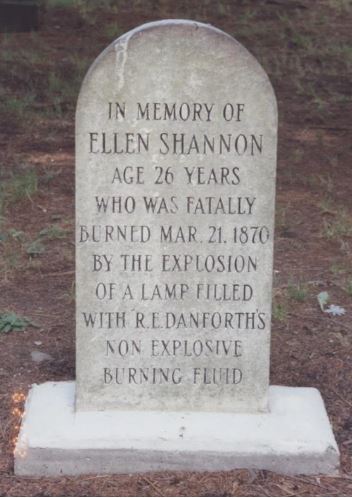Yesterday’s post was about Isaac Van Bunschoten’s U.S. Patent No 11979 on a lamp that burns rosin oil. In today’s world of ubiquitous electricity we take lighting for granted, but not that long ago, safe, reliable lighting was hard to come by. Lamps were fueled by various oils which many of which were dangerously unreliable. The headstone below is a testament to that danger:
Isaac Van Bunschoten’s invention, as short-lived as it was, is all the more notable for providing safe and sufficient light, until the next inventor advanced the technology. Whether ground-breaking or incremental all inventors contribute to the progress of science and the useful arts.




















